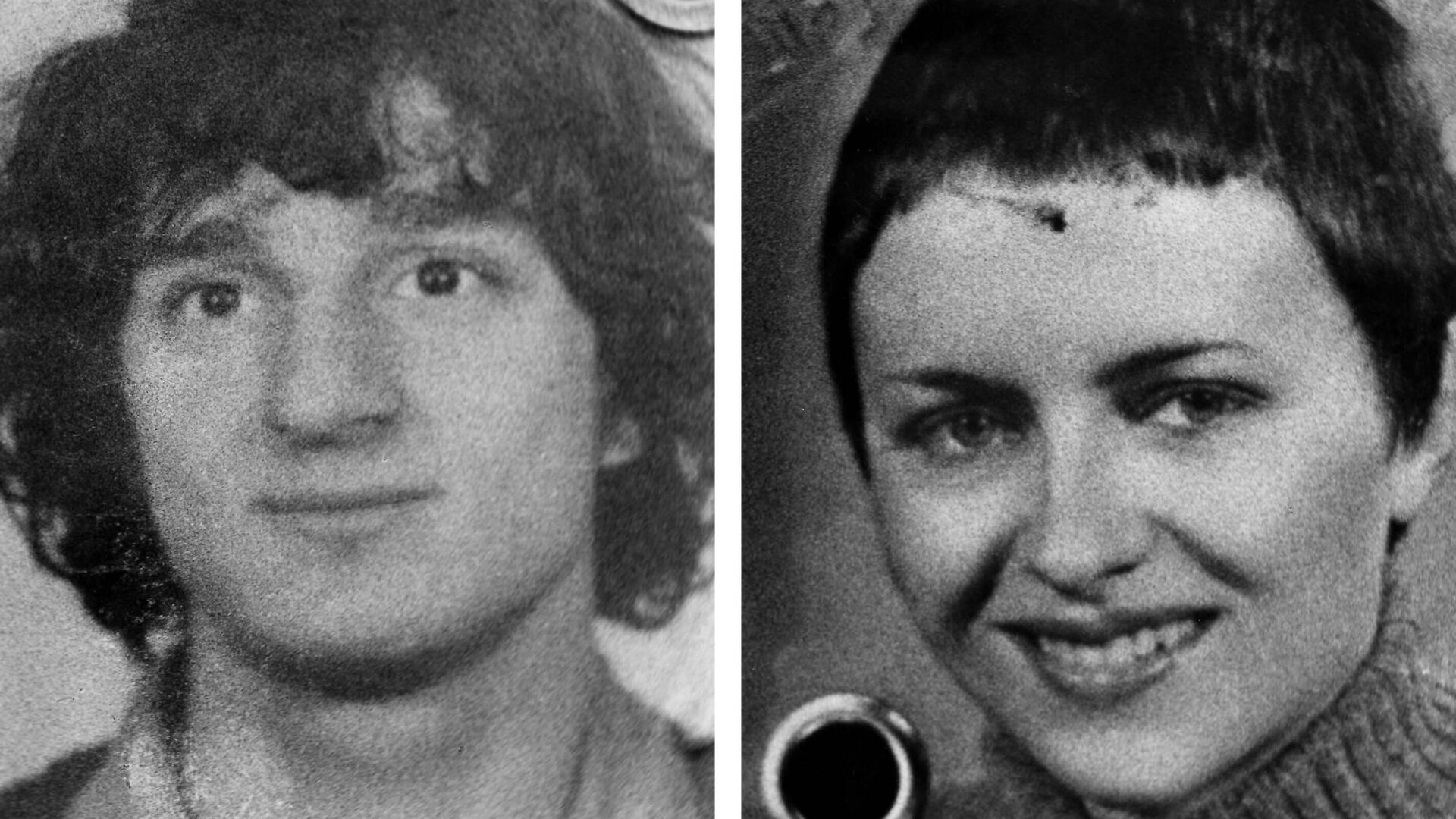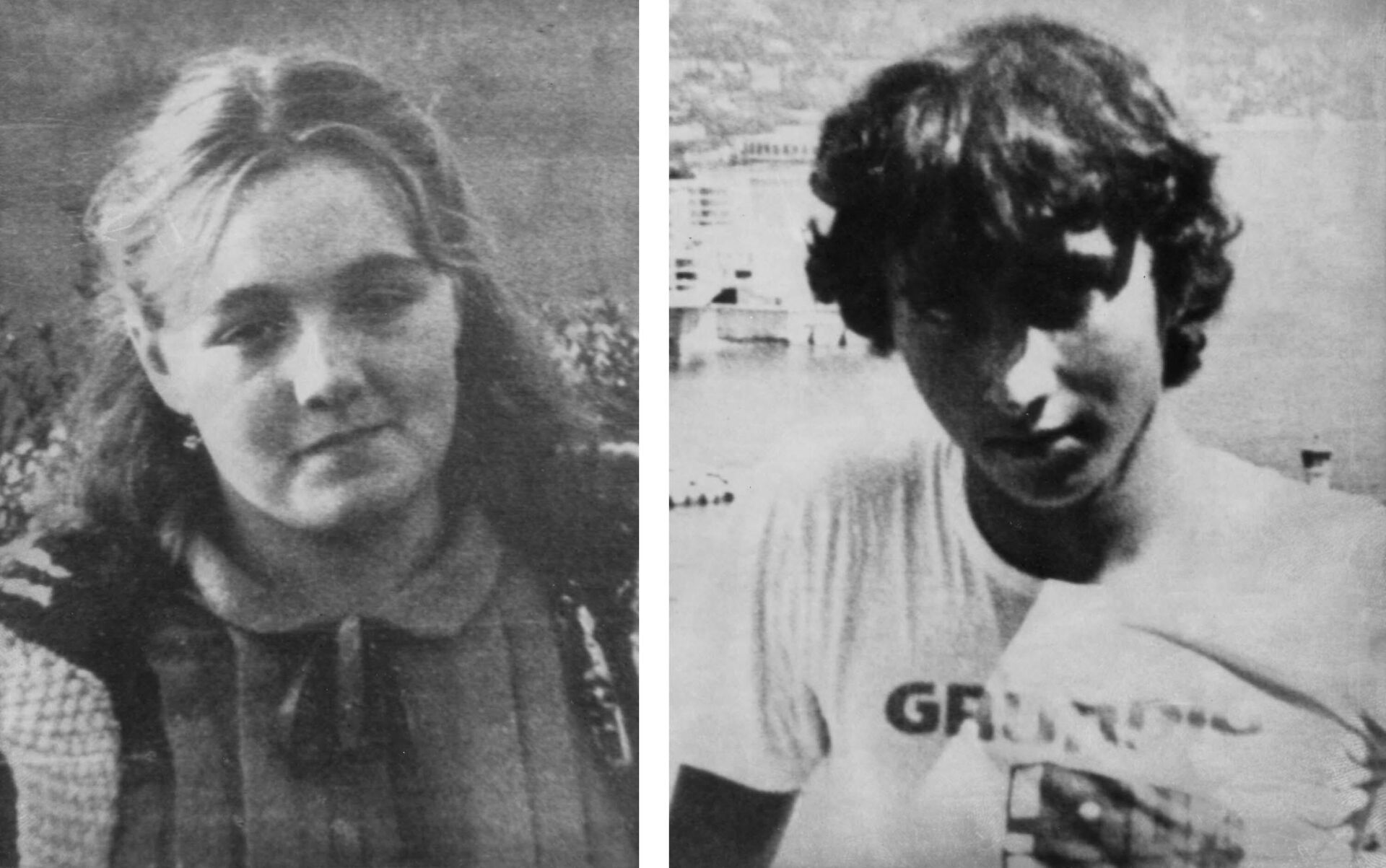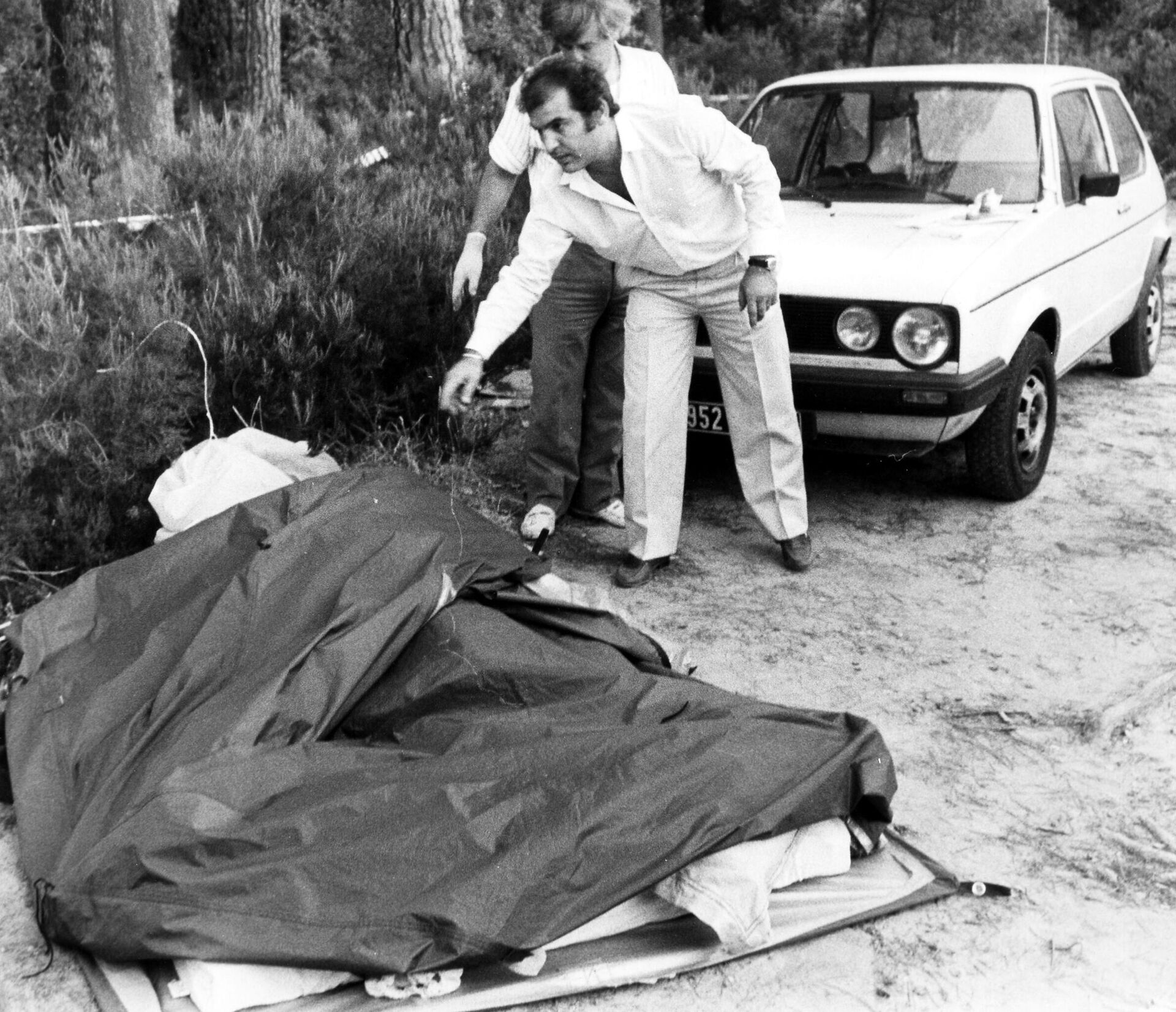Victims’ Families Request the ‘Monster of Florence’ Serial Killer Case to be Reopened
02:39 GMT 26.03.2022 (Updated: 10:59 GMT 05.03.2023)

© AP Photo / BRUNELLESCO TORRINI
Subscribe
Between 1968 and 1985 a serial killer referred to as the ‘Monster of Florence’ terrorized the countryside of Florence, Italy, murdering couples during or after they had sex in a car. The ‘monster’ killed eight couples, 16 people altogether. Despite investigating more than 100,000 men, police were not able to find the serial killer.
Now, the families of the 16 victims are demanding a new investigation into the horrific crimes that took place decades ago in Italy’s countryside of Florence between the years of 1968 and 1985.
“We are looking for the truth, with a new investigation, and we’re convinced that there are elements in the old case files that were wrongly overlooked,” lawyer Valter Biscotti told Agence France-Presse (AFP).
“We want a fresh look at a lead concerning a suspect named in an old police file who was never investigated properly, as well as DNA found on anonymous letters."
Biscotti is a lawyer representing one of the victim’s daughters. Nadine Mauriot, of France, was shot to death and stabbed while sleeping in a tent on a camping trip with her lover, who was murdered while trying to escape. The killing occurred in September 1985, when Mauriot was 36 and her partner Jean Michel Kraveichvili was 25.
In 2006, American journalist and author Douglas Preston published a story on the killings in The Atlantic. Speaking to Italian journalist Mario Spezi, who worked as a crime correspondent for La Nazione, Preston became engrossed by the unresolved investigation, as Spezi had been investigating the crime for 15 years. This article will reference the details in Preston’s article from 2006.

Stock pictures of Jean Michel Kravcichili and Nadine Mauriot, two french tourists found murdered in 1985 in San Casciano Val di Pesa, near Florence.
© AP Photo / BRUNELLESCO TORRINI
Mauriot was one of four women whose left breast and pubic area were cut with a “peculiar knife with a special notch in it, probably a scuba knife,” Preston wrote in the Atlantic article, noting that these mutilations were not messy or sexual, but by the medical examiner’s approximation were performed as if the serial killer may have been a surgeon or butcher.
The killer also used the same gun for all of his crimes, a .22-caliber Beretta “long barrel” firing Winchester series “H” copper-jacketed rounds, which had a defective firing pin that left a recognizable mark on the rim of every fired shell.
Throughout the time of the nightmarish murders, letters, as well as body parts from the victims, were sent to prosecutors. The killer was careful about not leaving behind traces of their DNA, opting to avoid leaving any fingerprints or saliva on sealed letters that were delivered to prosecutors.
The investigation went on for years, becoming one of Italy’s darkest mysteries to date. When one thinks of the cypresses and rolling hills of the Tuscan countryside they picture just that: romance. Not the cold-blooded murder of innocent couples who are in love.
The investigation spiraled, leading prosecutors to suspect anyone and everyone, from a poor farmer to Italy’s secret service, and even the probability of a satanic cult.
Relatives of victims Mauriot, Kraveichvili and Carmela de Nuccio (a 21 year-old who was murdered by the ‘Monster’ on June 6, 1981, before she was able to marry her fiance Giovanni Foggi who was also murdered), have requested access to the case file of the investigation’s lead suspect: farmer Pietro Pacciani.
The 69-year-old Tuscan farmer had a criminal history that fit the case: he was a brutish, alcoholic with thick arms and a short body who had been convicted of raping his own daughters. His time in prison also coincided with the gap in the killings between 1974 and 1981. In 1951, he had bashed in the head of a traveling salesman after catching him flirting with his fiancee, he then proceeded to rape her next to the dead body of the salesman he had just murdered.

Stock pictures of Pia Rontini and Claudio Stefanacci, both shot to death in the seventh such double murder in the Florence area since 1968. Police said the killer had cut off a breast to the girl.
© AP Photo / Anonymous
The evidence against Pacciani included a statement he had made after he murdered the salesman, in which he told prosecutors he had “gone crazy” when he saw his fiancee expose her left breast to the salesman. The ‘Monster of Florence’ had created a trademark of amputating the left breasts of his female victims.
Investigators tore through Pacciani’s home and property to find evidence. Inspector Perugini found a reproduction of Botticelli’s ‘Primavera’, which depicts flowers spilling out of the mouth of the female pagan nymph named Chloris. In Greek mythology, Chloris is abducted by Zephyrus the God of the west wind, who transforms her into the deity ‘Flora’ after they marry.
The flowers spilling from Chloris’ mouth reminded Perugini of one of the killer’s first victims whose body was found with a gold chain lying in her mouth.
But the gun, where was the gun the Monster of Florence used for all of his murders? If they could find the Beretta, then they would have their man, right?
Detectives did not find the gun, but they did find a scrap of torn rag, an unfired .22 bullet in the garden, and later received an anonymous note that said a piece of the .22 Beretta wrapped in a rag - which matched the one from Pacciani’s garage - had been found under a tree frequented by Pacciani.
With no murder weapon and no eyewitnesses, Pacciani was arrested on January 16, 1993 and charged with the crimes of the Monster of Florence.
However, despite the charges, Italian journalist Mario Spezi remained unconvinced as he didn’t think Pacciani would have been able to plot out such meticulous, cold-blooded crimes. Pacciani’s own wife, who detested him, said he couldn’t have been the Monster of Florence because he was an abusive alcoholic who spent most of his time at home.
Still, Florence thought they had their man. They sentenced Pacciani to life in prison for the murder of six of the eight couples, however, he was cleared by an appeal's court in 1996 due to a lack of evidence. Pacciani died in 1998 from a heart attack before he could be retried.
During Pacciani’s acquittal, prosecutors claimed they had new witnesses and even a confession for the crimes: Mario Vanni and Giancarlo Lotti, who confessed to being Pacciani’s accomplice and laid out the details of a far-fetched story that sounds more like the outline for a crime novel than a truthful admission. He claimed that a wealthy doctor from Florence had hired the men to collect female body parts that were to be used in satanic rituals.

**FILE**A man covers with a tent the lifeless body Nadine Mauriot, of France, killed along with her boyfriend Jean Michel Kravcicvili in San Casciano Val di Pesa, Italy, in this Sept. 9, 1985 file photo. A best-selling U.S. author of thrillers researching serial killings of lovers in Tuscany has himself become entangled in the Italian probe of the decades-old crime spree, suspected by authorities of lying about his literary detective work. Douglas Preston had come to Florence last month to co-author, with an Italian journalist, a book about the so-called "monster of Florence'' murders and mutilation of eight couples who were parked in their cars or camped in the Tuscan countryside between 1968 and 1985.
© AP Photo / TORRINI
But his claims were odd and he continually contradicted himself during his confession. He also said that he did not know the name of the doctor, that only Pacciani could name the true mastermind behind the violence. Pacciani said the story wasn’t true, and denied the “wealthy Satanic doctor” theory until the day he died.
Over time, the conviction of Pacciani began to collapse in on itself. The rag and gun pieces turned out to be manufactured clues. The bullet discovered in his garden may not have belonged to the gun used in the murders, one officer even admitted to Spezi that they thought the evidence may have been planted.
Spezi discovered a report made for Inspector Perugini by the FBI’s Behavioral Science Unit in Quantico, Virginia, but the report was ignored because it didn’t paint the convicted Pacciani as the killer. The report detailed the killer’s characteristics and motives.
The FBI summarized the suspect as a misogynistic, sexually impotent male, “who satisfied his libidinous cravings through killing.” The FBI also noted that the killer chose victims based on location, rather than the victims themself.
Spezi, the Italian journalist who studied this crime for 15 years, also believed the 'Monster of Florence' to be a tall, right-handed man in excellent physical form, with a cool composure, effectively omitting the short, overweight, alcoholic Pacciani.
Spezi and Preston honed in on their man, going so far as to actually interview their suspect who was not named in Preston’s Atlantic article for safety reasons. They found him in his apartment in Florence. His wife had left the room during the visit.

** FILE ** Mario Vanni in an undated file photo taken during the trial for the murder, between 1974 and 1985, of seven couples in the outskirts of Florence, Italy's worst killing spree, known as the murders of "the monster of Florence". Vanni was questioned again by investigators Thursday, Dec. 16, 2004.
© AP Photo
The man was tall, thin, cool, cocky and charming. On tape with the two journalists - one Italian the other American - the Sardinian man admitted to threatening his father with a scuba knife during a fight. He also admitted that his marriage from 1982 to 1985 fell apart because his wife couldn’t have children, and the two journalists later discovered it was annulled for non-consummation.
Could this be the cool, calm, impotent murderer who loathed women?
Their handsome host also admitted to living in Lake Como from 1975 to 1980, when there was a break in the killings. When they finally asked him if he was the 'Monster of Florence,' he smiled and said, “No, I like my p**** whole.” When the two journalists got up to leave, their host leaned into Spezi’s face, and in a low voice said, “Ah, Spezi, I was forgetting something.” His voice turned dark, “Listen carefully: I never joke around.”
Months later, a source claimed that a run-down building a group of Sardinians often frequented on the estate of a grand villa outside of Florence held six locked iron boxes and two guns: a machine pistol and a .22 Beretta. When asked what they were by a friend, the journalist’s suspect - whom they refer to as “the Sardinian” - reportedly slapped his chest and said, “That’s my stuff.”
In turn, the two journalists reported this lead to the Italian police, an act that did not go over well. Preston, the American journalist, was interrogated without a translator nor an attorney present. The police surmised that the two had planted false evidence in an attempt to frame the Sardinian.

Farmhand Pietro Pacciani, dubbed ''The Monster of Florence'', center, flanked by his defense lawyers Rosario Bevacqua, left, and Pietro Fiorentini, right, waves from a window of a religious institute in Florence Wednesday Feb. 14, 1996. Pacciani was set free on Feb. 13, 1996, after an appeals court overturned his conviction. This 71-year-old grandfather, convicted for seven double murders in what was Italy's worst killing spree, left prison after being cleared of "all fault".
© AP Photo
Italian prosecutors arrested Spezi after the two journalists published their book, “The Monster of Florence: A True Story.” But the real conflict here wasn’t that two journalists had written a book, it was evidently more obvious: a journalist was doing a better job at investigating the case of the Monster than actual police, and the police saw it as an undermining of their authority. Guiliano Mignini, the Italian judge who had interrogated Preston, punished Spezi with the same extremity the Italian legal system uses for terrorists.
Spezi was released after three weeks in a gruesome prison, the sentence was enough to end his involvement in the 'Monster of Florence' case. In the end, after being terrorized by the police, he was finally finished.
As for Preston, he returned to his home in Maine after being banished from Italy.
Biscotti, a lawyer for the Monster’s victims, wants to reopen a case that will look at Pacciani’s friend, Giampiero Vigilanti who is now 90 years-old.
Reopening the case in the year 2022 may offer some slim chance of hope to the surviving relatives of the victims. But the investigation of the 'Monster of Florence' is clearly a sensitive topic, not only to the heartbroken families of the victims (one father went broke trying to track down the killer, he suffered a heart attack from exhaustion due to the case and died) but also to the police officers and journalists who have studied, and butted heads over, the 'Monster of Florence' for years.
Let's stay in touch no matter what! Follow our Telegram channel to get all the latest news: https://t.me/sputniknewsus



